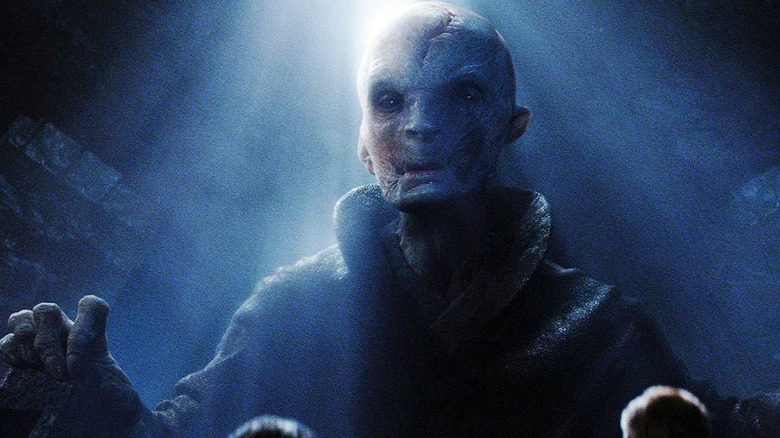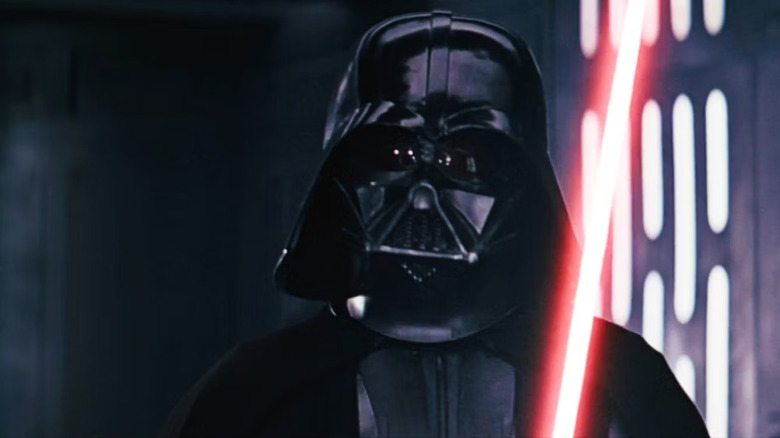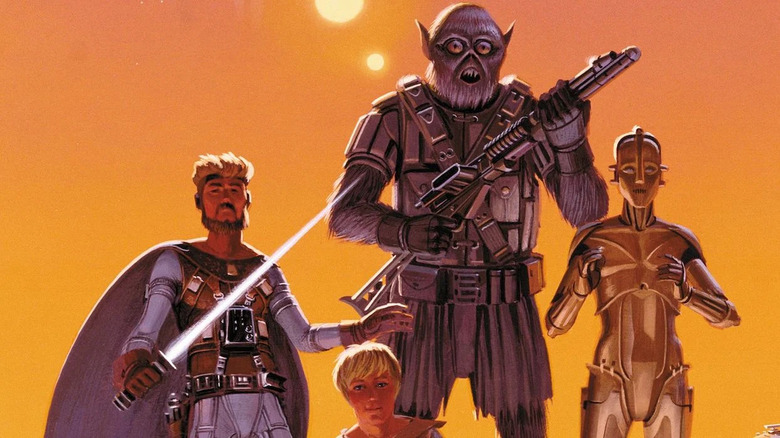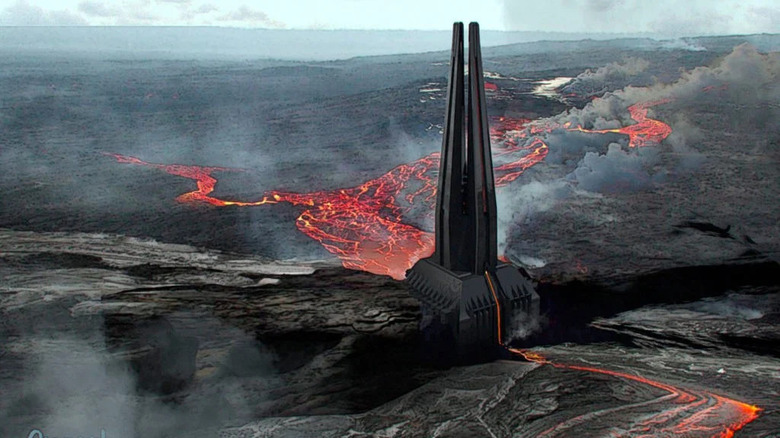The Force Awakens Has Its Origins In The Earliest Drafts Of Star Wars
There's long been this narrative that some "Star Wars" fans are mad that "The Force Awakens" threw out George Lucas's ideas for the continuation of the Skywalker Saga and that it doesn't really have anything to do with him. And while there was a version of the stories from George Lucas' blueprint that would have delved deeper into the Whills and midi-chlorians, the brunt of ideas that we were presented with in the sequel trilogy came right from Lucas' brain. From Luke's turn from the Force to the character of Rey and many points in between, "The Force Awakens" is a mirrored reflection of many of George Lucas' early ideas going straight back to the early drafts of the screenplay for "A New Hope."
It's like poetry, it rhymes.
The biggest clue that "The Force Awakens" fits neatly in the world of the Skywalker Saga is that it rhymes so beautifully with "The Phantom Menace" and "A New Hope." In all three films, we're taken to a desert planet where a whizkid mechanic strong in the Force is adopted by a wise mentor. At the end of the film, that mentor succumbs to death at the end of a red lightsaber. Each film also gets a progressively larger ending, with the explosion of a spherical object in space, starting with the Droid Control Ship, then the Death Star, and finally Starkiller base. Those complaining that they'd strayed from the vision of George Lucas because it was a rehash failed to realize that was a feature, not a bug.
But the modulation in "The Force Awakens" comes directly from the idea of George Lucas that Luke would be there to take off. Luke should have been the mentor in this era of his life, but he's unavailable and Han is forced to make the sacrifice. This is why the central question of "The Force Awakens" isn't about Rey's identity — it tells us from the very beginning that Luke's disappearance is the real mystery to solve. It's a beautiful and stunning reversal of the common elements that make up the first chapter of each trilogy and the way "The Last Jedi" pays it off is nothing short of perfect.
"It's poetry," George Lucas once said in "The Beginning," the documentary about the making of the first of the prequel trilogy, "it rhymes."
Something older
But that baked-in rhyming structure and inspiration from George Lucas' blueprint isn't the only thing "The Force Awakens" drew inspiration from. Going back and looking at older drafts of the screenplay for "A New Hope" yields a number of touch points that could have easily informed events and dialogue inside the seventh episode of the Skywalker saga. In the third draft of the screenplay, then called "The Star Wars: From the Adventures of Luke Starkiller," there's a moment where Darth Vader feels that Ben Kenobi has returned from his exile and joined the fight against the Sith.
Then, Vader says, "Something old has been awakened. The Force has suddenly grown stronger. We must travel future paths with caution."
This very much echoes Snoke's dialogue in "The Force Awakens": "There has been an awakening. Have you felt it?"
Snoke is sensing the awakening in the Force of Finn and Rey, as they make their first moves against the First Order. It's a troubling sensation for him, but the story beat is the same. Snoke takes it one step further, though, and claims to feel a rise in both the dark side and the light.
In this third draft of "The Star Wars" the Force was amplified by "Kiber" crystals and in order to be a Jedi, you needed one. And Ben explains to Luke that his former apprentice stole his Kiber crystal when he turned to the Dark Side and now the Sith held all of the Kiber crystals on Alderaan. It's an interesting idea and you can see how George Lucas streamlined the concepts over his iterations of the script, proving how important editing and revision are.
No wasted ideas
If there is anything that Lucasfilm has proven in its new renaissance since its purchase by Disney it's that no good idea will go unused. Whether that's Ralph McQuarrie's early sketch for Vader's Castle finally making it to the big screen in "Rogue One: A Star Wars Story" and his early Wookiee designs becoming the Lasat, or the continued use of midi-chlorians that Lucas conceived in the earliest days of "Star Wars". There's no reason for these creatives to reinvent the wheel if they can keep going back to the deep well of designs and ideas that George Lucas came up with and worked on in the first place.
Even the big bad evil in "The Force Awakens," Starkiller Base, was named after Luke Skywalker's original name from the earliest drafts of the script.
The one thing you can be confident of when it comes to "Star Wars" is that no idea will be thrown away if it can come back later.



